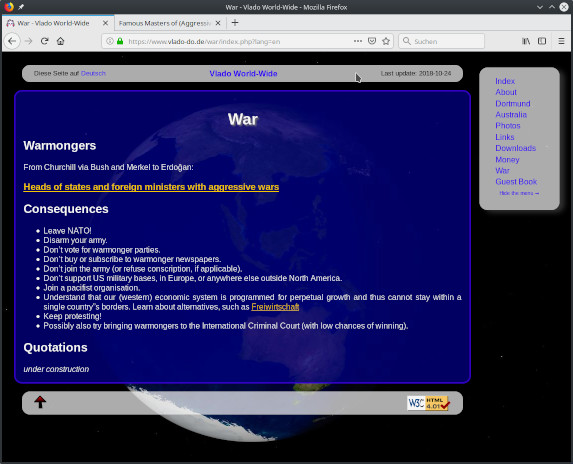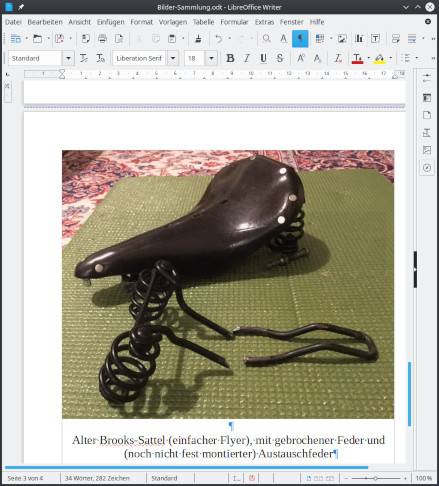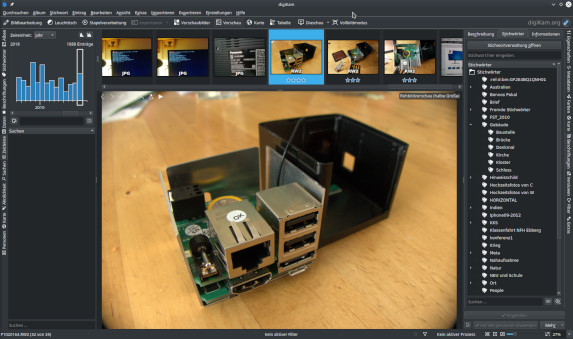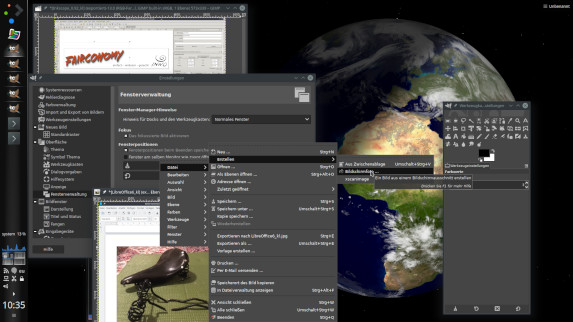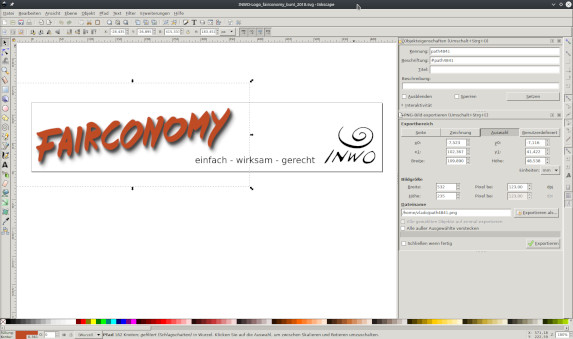Free Software
Since about 1999, my third “computer year“, I'm preferrably using free software. Back then I was thinking that most people would be doing the same within about ten years... but in reallity it took a lot longer, and it didn't turn out the way I thought it would:Back in 2009, when I started this free software page, the computer world was very different. Microsoft Windows was dominating desktop computers, and Microsoft's web browser Internet Explorer still had a market share of about 80% (after more than 90% in 2003).
But 2009 also was the year when Android really got started: version 1.1 for the first time supported the on-display keyboard! ;-) The availability of the relatively cheap, omnipresent, (almost) always on-line mini computers massively extended the group of regular computer users, and it also altered the way the average users work with computers. Even more than before, if possible, the device and the software on it are perceived as a unit, that can at best be extended by installing certain “apps“.
But the rise of Android, which internally uses Linux and thus free software, was accompanied by the fall of Microsoft – so far, that in 2018 Microsoft announced they'd stop the development of their own web browser (this time for good, probably).
Smartphones and other post 2009 devices (tablets, MacBooks, later Chromebooks ...) are using a lot of free software in the background, but packaging and distribution usually is far from being free. So in 2018 the pre-installed software on most devices cannot be replaced, or it can only be replaced with a lot of work, and causing limitations. And often the producers only provide updates for about two years from the device's launch (not from when they stopped selling them), even though these updates would be required to securely use the devices.
Still “traditional“ computers exist which, no matter if they are the size of a trash can, a notebook, or matchbox-size like a Raspberry Pi, can be equiped with a operating systems and programs of your choice, and from different sources. Especially when using one of these economical micro-computers, which indeed already offer sufficient performance for frugal purposes and patient users, it's an advantage if you already got used to free software, since this in principle is available for most systems. All the programs presented here are available for GNU/Linux (on various computer architectures), for MacOS, and for Microsoft Windows.
Mozilla Firefox has been my dear Internet navigator for many years. At times certain other browsers may have had certain advantages, but even then I usually liked Firefox's usability best. One major difference in contrast to Google Chrome, currently the biggest competition, is the Awesome Bar: its suggestions largely stem from your browsing history and your bookmarks, not from what Google thinks you might be looking for. By default it does not even transmit every character you type to Google (although a click on the harmless-looking „improve your search suggestions“ can quickly change this). As you can see in the screenshot Firefox itself comes with a rather minimalistic user interface, like all current web browsers. Under KDE I'm using normal window decorations, and especially in web browsers I think this is better. From a KDE developer I read an extensive post why he's of the same opinion.
OpenOffice bzw. LibreOffice was, just like Mozilla (Firefox), a commercial program (“StarOffice”), standing in competition to a certain product from Redmond. Because of that Redmond company's near-monopoly and then secret file format StarOffice could not be sold any more and was given to the public as free and open source software. It really is possible to do pretty much everything with it that's possible to do with the competition; some features are not as good, some are better... but it is possible, and the program will always remain free.
digiKam is my preferred photo management solution – the best program I've seen yet, for this purpose! digiKam is, other than the first two programs, free software from the roots, and it was not available for Windows oder MacOS (without X Window System), when I first discovered it. Only in the last few years the possibilities, and maybe also the willingness, increased, to provide free software for the commercial operating systems as well. ⇒More hints from me.
GIMP is a classical graphics editor, which does not have to be afraid of a comparison with the expensive offers from Adobe, i.e. Photoshop. The traditional user interface follows a different concept, with many independent windows, as I'm showing it here in the screenshot. I like this much better than “one big application window“, since I don't have to click to activate windows, I don't have many windows open per (virtual) desktop, and I'm used to it. To better suit the majority of users, the default setting in GIMP recently has been changed to single-window mode.
Inkscape is a vector graphics editor – which allows for some quite different ways of editing from a pixel-based editor, like GIMP. Most prominently graphics can be taken apart, rotated, and scaled, without affecting the quality. Many of the graphics in Wikipedia where created with Inkscape, and thus can be modified easily, e.g. the map of India with my itinerary, or a Wikipedia diagram explaining “Sofortüberweisung” (which I composed).
